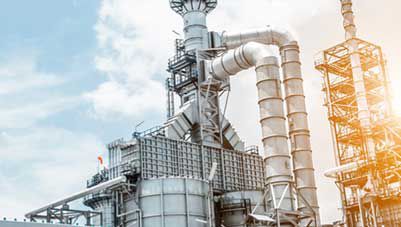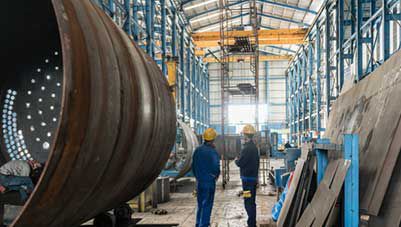Backhoe loaders are versatile, heavy-duty machines widely used in construction, agriculture, and infrastructure development. This guide offers a comprehensive look at backhoe loaders, explaining their functions, operational mechanics, and ideal applications. It also details important specifications, key components, and distinctions from wheel loaders, along with practical advice on purchasing, 2025 pricing ranges, and financing solutions. This information equips readers to select, operate, and invest in a backhoe loader confidently.
What is a backhoe loader?
A backhoe loader is a multifunctional, tractor-mounted construction machine equipped with a front loader bucket for lifting and transporting materials, and a rear backhoe arm with a smaller bucket for digging trenches and holes. This makes it suitable for a wide range of tasks in construction, agriculture, and landscaping, including excavation, loading, grading, and light demolition. By combining the functions of a loader and a backhoe in a single mobile unit, it reduces the need for multiple machines and enhances efficiency on job sites.
How to operate a backhoe loader?
Operating a backhoe loader requires understanding its dual functionalities and control systems. Here are key pointers to operate one effectively:
- Start the engine: Ensure all safety checks are complete before ignition.
- Engage controls: Use the joystick and pedals to manoeuvre the loader and backhoe arms.
- Loader operation: Use the front bucket to scoop, carry, and dump materials.
- Backhoe operation: Extend the backhoe arm to dig trenches or holes, carefully controlling the boom, dipper, and bucket.
- Stabilisers: Deploy stabilisers before digging for increased balance and safety.
- Work in sequence: Alternate between loading and digging based on task needs.
- Safety first: Always maintain situational awareness and follow operational safety protocols.
Specifications of backhoe loader
Backhoe loaders typically feature powerful engines ranging from 60 to 100+ horsepower, providing the strength needed for heavy-duty work. Key specifications include:
Engine and Performance
- Power: 70–86 HP (high-end models up to 109 HP)
- Torque: 400–450 Nm
- Fuel Type: Diesel (BS-V compliant)
- Maximum Speed: Around 37 km/h (up to 50 km/h for select models)
Front Loader Specifications
- Bucket Capacity: 1.0–1.2 m³
- Dump Height: 2.7–2.9 m
- Lift Capacity: Approximately 1,490 kg
- Breakout Force: Around 53 kN
Rear Backhoe Specifications
- Maximum Digging Depth: 4.7–5.3 m
- Ground Reach: About 5.6 m
- Loading Height: Around 4 m
- Bucket Force: Approximately 56 kN
- Bucket Rotation: 205°
Dimensions and Weight
- Operating Weight: 7,500–9,000+ kg
- Length: Around 5.7 m
- Width: Approximately 2.35 m
- Height: About 2.87 m
Hydraulic System
- Pump Flow: 114–132 L/min
- System Pressure: Around 160 bar
These features make backhoe loaders simple to drive, maintain, and highly adaptable for various construction tasks.
What are backhoe loaders used for?
Backhoe loaders serve multiple purposes on a construction site and beyond:
- Excavation: Digging trenches for utilities, irrigation, foundations, and pits.
- Material Handling: Lifting, loading, and transporting soil, gravel, debris, and construction materials.
- Landscaping: Leveling land, shaping terrain, moving rocks, planting trees, and setting up drainage systems.
- Roadwork: Paving, breaking asphalt, and road maintenance.
- Demolition: Tearing down small structures and clearing rubble.
- Utility Tasks: Excavating for pipe or cable installation and maintenance.
- Agriculture: Trenching for irrigation, moving hay, and removing trees.
- Site Cleanup: Clearing worksites, removing snow, and handling debris.
Their flexibility makes them a popular choice across agriculture, urban development, and infrastructure projects.
What are the essential parts of a backhoe loader?
Understanding the main components helps in better operation and maintenance:
- Boom: The primary arm that supports the digging function.
- Dipper (Stick): Connects the boom to the bucket and extends reach.
- Bucket: Attached to the dipper for digging and scooping.
- Loader bucket: Front attachment used for loading and carrying materials.
- Stabilisers: Hydraulic legs that stabilise the machine during digging.
- Cab: Operator’s seat and controls.
- Engine: Powers the machine and hydraulic systems.
- Hydraulic system: Controls the movement of arms and attachments.
Differences between wheel loaders and backhoe loaders
| Feature | Wheel loader | Backhoe loader |
|---|---|---|
| Primary function | Loading and carrying materials | Digging and loading |
| Attachments | Large front bucket | Front loader bucket + rear digging arm |
| Digging capability | Limited | Extensive digging with backhoe arm |
| Manoeuvrability | Highly manoeuvrable in tight spaces | Moderately maneuverable |
| Use Cases | Material handling, roadwork | Excavation, trenching, loading |
Buying guide for backhoe loader machine
When purchasing a backhoe loader, consider these factors:
- Purpose and workload requirements
- Engine power and digging depth
- Machine size and maneuverability
- Brand reliability and after-sales service
- Cost and financing options, including Machinery Loan Finance
- Maintenance and fuel efficiency
Evaluating these aspects ensures you select the right machine suited for your business needs.
Backhoe Loader Price Categories 2025
| Category | Engine Power | Operating Weight | Price Range (Ex-Showroom) |
|---|---|---|---|
| Compact / Entry-Level | 49 HP | 5,000 – 7,500 kg | Rs. 12 Lakh – Rs. 20 Lakh |
| Standard Utility | 74 – 76 HP | 7,500 – 8,000 kg | Rs. 23 Lakh – Rs. 33 Lakh |
| High-Performance | 74 – 80 HP | 8,000 – 8,500 kg | Rs. 34 Lakh – Rs. 38 Lakh |
| Heavy-Duty / Premium | 90 – 100+ HP | 8,500+ kg | Rs. 36 Lakh – Rs. 44 Lakh |
Backhoe loader machine financing options
Financing your backhoe loader can ease the upfront cost. Various options include:
- Equipment loans with flexible repayment terms
- Leasing programs
- Customized plans for small to large enterprises
Explore Industrial Equipment Finance for competitive rates and simplified application processes tailored for heavy machinery.
Conclusion
Backhoe loaders are indispensable in multiple industries for their versatility and efficiency. Investing in the right machine and financing it wisely can significantly boost operational productivity. For financial support beyond machinery, consider a business loan to manage broader business expenses.
















